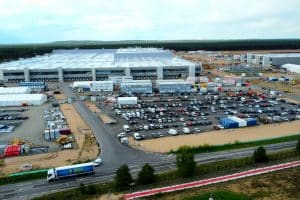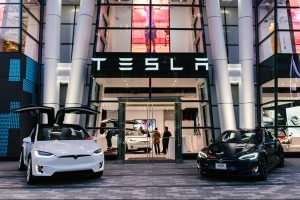After a challenging December, Tesla China adopted a number of strategies designed to improve its vehicle sales in the country. Among these was a price reduction on the domestically-produced Model 3 sedan and Model Y crossover. Recent comments from Tesla VP Grace Tao have now provided some insights into these price adjustments.
In a recent interview with local Chinese media, Tao was asked about Tesla China’s rather volatile pricing strategy. Similar to Tesla in the United States, Tesla China saw a number of price adjustments over the past year. This has resulted in some netizens in the country stating that Tesla’s pricing strategy is “too casual.”
Addressing the inquiry, Grace Tao explained that the pricing strategy of Tesla China’s vehicles is “actually a forecast of the company’s cost changes in the next period of time.” She also explained that the landscape had changed now, at least compared to the last year due to the end of the pandemic.
“The biggest difference between 2023 and last year is that the epidemic is basically over, and we believe that the supply chain has largely returned to normal and will not experience the various unpredictable shortages of materials that have occurred in previous years, leading to uncertainty in costs. In my personal opinion, price adjustments reflect our good planning for the supply chain to a certain extent. We expect what the vehicle cost will be approximately and then make such adjustments according to this expectation,” the executive said.
The Tesla VP also addressed the issue of some consumers in China who were upset that they bought vehicles before the recent round of price reductions took effect. So notable were the reactions of some consumers that protests were reportedly held in a number of Tesla stores.
“Maybe some consumers say that ‘I bought it yesterday, and you can’t suddenly change the cost overnight,’ but the fact is that no company calculates the cost every day, but rather calculates it on a time period. At the same time, the price of industrial products cannot be immediately reflected in the terminal products. Some raw materials may still be contracted a few months ago, so it actually has a certain lag.
“In addition, the price of a product is not only affected by its own cost, but also by the market demand and competition. If there is a change in the market demand or competition, it will also affect the price of the product. Therefore, the price adjustment of a product is not a simple matter. It is a comprehensive consideration of the enterprise’s own cost, market demand and competition,” the executive said.
Overall, the executive clarified that Tesla China’s price adjustments are not casual at all. Instead, they are done with a clear understanding of the company’s costs, demand in the market, and competitors. So far, however, Grace Tao noted that Tesla China has not had to change its strategy due to market demand or competition, which bodes well for the company’s footing in the country’s auto market. The executive also highlighted that after this recent round of price reductions, the cost of the domestically-produced Model 3 and Model Y should become more stable.
“In the past, Tesla has made several larger price adjustments due to external factors that have had an impact on costs. For example, when we became a domestic car(maker), the price naturally decreased compared to a pure import, at least the tariff was saved by 15%. For example, after our supply chain stabilized, it would definitely be lower than before when it was shipped from abroad. Tesla’s supply chain localization rate is now 95%, so theoretically, there is not much room for improvement. Therefore, I think after this price adjustment, the price should be relatively stable.
“Tesla’s logic is very simple. When the cost is calculated to have changed, such as changing raw materials, we will immediately increase or decrease the price. Actually, Tesla’s logic is very simple. Consumers seem to think that the price drop was relatively large compared to last month, but in fact, the price rose last month, and compared to the costs before the price increase, the difference is not large,” she said.





